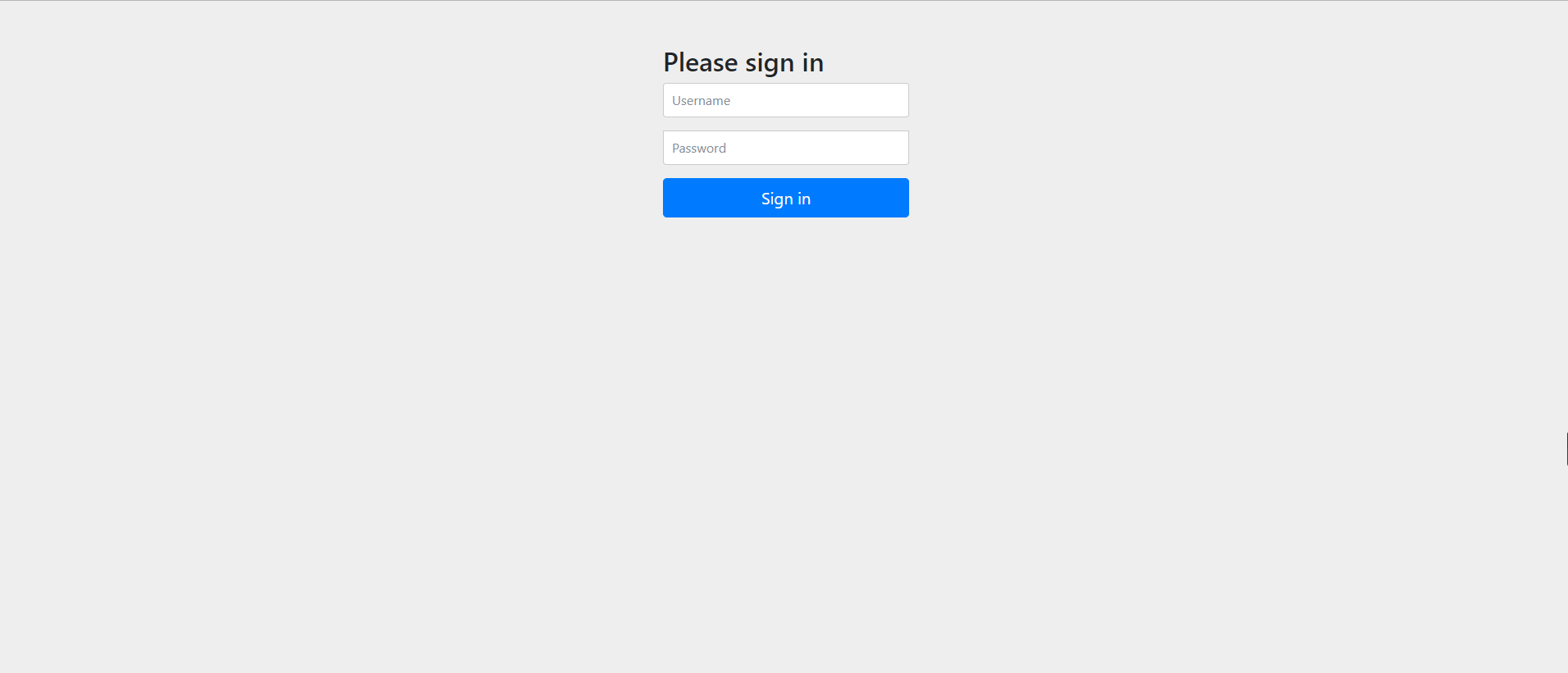2.3 Spring Cloud Eureka 实战
2.3.1 Eureka Zone与Region实战
这里需要创建2个Eureka Server,分为2个Zone,同属于shanghai这个Region。其中Eureka Server的配置文件代码如下:
-
创建Eureka Server工程:
代码清单:ch2_2/ch2_2_eureka_server_1/src/main/resources/application.yml
spring: application: name: spring-cloud-eureka-1 server: port: 8761 eureka: instance: hostname: localhost metadata-map: zone: zone-1 client: register-with-eureka: false fetch-registry: false prefer-same-zone-eureka: true region: shanghai availability-zones: shanghai: zone-1, zone-2 service-url: zone-1: http://localhost:8761/eureka/ zone-2: http://localhost:8762/eureka/ server: enable-self-preservation: false wait-time-in-ms-when-sync-empty: 0代码清单:ch2_2/ch_2_eureka_server_2/src/main/resources/application.yml
spring: application: name: spring-cloud-eureka-2 server: port: 8762 eureka: instance: hostname: localhost metadata-map: zone: zone-2 client: register-with-eureka: false fetch-registry: false prefer-same-zone-eureka: true region: shanghai availability-zones: shanghai: zone-1, zone-2 service-url: zone-1: http://localhost:8761/eureka/ zone-2: http://localhost:8762/eureka/ server: enable-self-preservation: false wait-time-in-ms-when-sync-empty: 0- eureka.client.prefer-same-zone-eureka:为true优先选择client实例所在的zone的服务
- eureka.client.region:标识当前所属region
- eureka.client.availability-zones:当前可用的Zones
- eureka.client.service-url:这里需要分开Zone做配置
再创建2个Eureka Client端,分别属于Zone1和Zone2中,如下:
-
创建Eureka Client工程
代码清单:ch2_2/ch2_2_eureka_client_1/src/main/resources/application.yml
server: port: 8080 spring: application: name: spring-cloud-eureka-client eureka: instance: prefer-ip-address: true metadata-map: zone: zone-1 client: prefer-same-zone-eureka: true region: shanghai availability-zones: shanghai: zone-1, zone-2 service-url: zone-1: http://localhost:8761/eureka/ zone-2: http://localhost:8762/eureka/代码清单:ch2_2/ch2_2_eureka_client_1/src/main/resources/application.yml
server: port: 8081 spring: application: name: spring-cloud-eureka-client eureka: instance: prefer-ip-address: true metadata-map: zone: zone-2 client: prefer-same-zone-eureka: true region: shanghai availability-zones: shanghai: zone-1, zone-2 service-url: zone-1: http://localhost:8761/eureka/ zone-2: http://localhost:8762/eureka/在Eureka Client端添加一个HelloController.java,用作后续测试:
代码清单:ch2_2/ch2_2_eureka_client_1/src/main/java/com/springcloud/book/ch2_2_eureka_client_1/controller/HelloController.java
package com.springcloud.book.ch2_2_eureka_client_2.controller; import org.springframework.web.bind.annotation.GetMapping; import org.springframework.web.bind.annotation.RestController; /** * @Date: 2019/7/24 9:28 * @Version: 1.0 * @Desc: */ @RestController public class HelloController { @GetMapping("/hello") public String hi() { return "Hello, this is Zone-1"; } }代码清单:ch2_2/ch2_2_eureka_client_2/src/main/java/com/springcloud/book/ch2_2_eureka_client_2/controller/HelloController.java
package com.springcloud.book.ch2_2_eureka_client_2.controller; import org.springframework.web.bind.annotation.GetMapping; import org.springframework.web.bind.annotation.RestController; /** * @Date: 2019/7/24 9:28 * @Version: 1.0 * @Desc: */ @RestController public class HelloController { @GetMapping("/hello") public String hi() { return "Hello, this is Zone-2"; } }以上,我们在Eureka Client端提供了一个Hello方法,顺次启动2个Eureka Server和2个Eureka Client后,在浏览器分别访问http://localhost:8080/hello和http://localhost:8081/hello,浏览器可以正常显示Hello, this is Zone-1和Hello, this is Zone-2,证明Eureka Client可以正常提供hello服务。
-
创建consumer工程
项目依赖pom.xml
代码清单:ch2_2/ch2_2_eureka_consumer/pom.xml
<?xml version="1.0" encoding="UTF-8"?> <project xmlns="http://maven.apache.org/POM/4.0.0" xmlns:xsi="http://www.w3.org/2001/XMLSchema-instance" xsi:schemaLocation="http://maven.apache.org/POM/4.0.0 http://maven.apache.org/xsd/maven-4.0.0.xsd"> <modelVersion>4.0.0</modelVersion> <parent> <artifactId>ch2_2</artifactId> <groupId>com.springcloud.book</groupId> <version>0.0.1-SNAPSHOT</version> <relativePath>../pom.xml</relativePath> </parent> <artifactId>ch2_2_eureka_consumer</artifactId> <version>0.0.1-SNAPSHOT</version> <name>ch2_2_eureka_consumer</name> <description>ch2_2_eureka_consumer</description> <properties> <project.build.sourceEncoding>UTF-8</project.build.sourceEncoding> <project.reporting.outputEncoding>UTF-8</project.reporting.outputEncoding> <java.version>1.8</java.version> </properties> <dependencies> <dependency> <groupId>org.springframework.boot</groupId> <artifactId>spring-boot-starter-web</artifactId> </dependency> <dependency> <groupId>org.springframework.cloud</groupId> <artifactId>spring-cloud-starter-netflix-eureka-client</artifactId> </dependency> <dependency> <groupId>org.springframework.cloud</groupId> <artifactId>spring-cloud-starter-openfeign</artifactId> </dependency> </dependencies> <build> <plugins> <plugin> <groupId>org.springframework.boot</groupId> <artifactId>spring-boot-maven-plugin</artifactId> </plugin> </plugins> </build> </project>- openfeign:声明式Web Service客户端,后面会详细介绍。
配置文件:
代码清单:ch2_2/ch2_2_eureka_consumer/src/main/resources/application.yml
spring: application: name: spring-cloud-eureka-consumer server: port: 8000 eureka: instance: prefer-ip-address: true metadata-map: zone: zone-1 client: register-with-eureka: true fetch-registry: true prefer-same-zone-eureka: true region: shanghai availability-zones: shanghai: zone-1,zone-2 service-url: zone-1: http://localhost:8761/eureka/ zone-2: http://localhost:8762/eureka/创建HelloRemote.java
代码清单:ch2_2/ch2_2_eureka_consumer/src/main/java/com/springcloud/book/ch2_2_eureka_consumer/remote/HelloRemote.java
package com.springcloud.book.ch2_2_eureka_consumer.remote; import org.springframework.cloud.openfeign.FeignClient; import org.springframework.web.bind.annotation.RequestMapping; /** * @Date: 2019/7/24 10:37 * @Version: 1.0 * @Desc: */ @FeignClient(name= "spring-cloud-eureka-client") public interface HelloRemote { @RequestMapping(value = "/hello") String hello(); }创建HelloController.java
代码清单:ch2_2/ch2_2_eureka_consumer/src/main/java/com/springcloud/book/ch2_2_eureka_consumer/controller/HelloController.java
package com.springcloud.book.ch2_2_eureka_consumer.controller; import com.springcloud.book.ch2_2_eureka_consumer.remote.HelloRemote; import org.springframework.beans.factory.annotation.Autowired; import org.springframework.web.bind.annotation.RequestMapping; import org.springframework.web.bind.annotation.RestController; /** * @Date: 2019/7/24 10:40 * @Version: 1.0 * @Desc: */ @RestController public class HelloController { @Autowired HelloRemote helloRemote; @RequestMapping("/hello") public String index() { return helloRemote.hello(); } }到这里,整个测试样例已经构建完成,现在可以顺次启动Eureka Server、Eureka Client、Consumer。
首先在浏览器中访问:http://localhost:8000/hello ,页面正常返回Hello, this is Zone-1,刷新多次后,并无变化,说明消费者消费就近原则,消费Zone-1成功,并不会消费到Zone-2中,这时,我们停止Eureka Client1的服务,再去刷新浏览器http://localhost:8000/hello ,这时可以看到,页面跳转到500,并且刷新有等待时间,这是Eureka的本地缓存,稍等一会后,等缓存过期,再次刷新浏览器,可以看到页面返回Hello, this is Zone-2,证明,我们的服务已经转到Zone-2中了,测试成功。
2.3.2 开启HTTP Basic认证
在生产环境中,往往需要考虑安全问题,Eureka Server对外暴露的REST API,如果没有安全验证,是一件非常危险的事情,任何人都可以通过Eureka Server的REST API随意更改服务的注册信息,造成服务异常,这里我们可以集成Spring Security来对Eureka Server做访问权限控制,只有验证通过的客户端才能在Eureka Server正常的注册、修改、注销服务实例。
-
创建Eureka Server
工程依赖增加
spring-boot-starter-security,pom.xml如下:代码清单:ch2_3/ch2_3_eureka_server/pom.xml
<dependency> <groupId>org.springframework.boot</groupId> <artifactId>spring-boot-starter-security</artifactId> </dependency>由于篇幅原因,这里仅展示新增部分,更多详细内容可以访问Github仓库。
配置文件如下:
代码清单:ch2_3/ch2_3_eureka_server/src/main/resources/application-security.yml
server: port: 8761 eureka: instance: hostname: localhost client: register-with-eureka: false fetch-registry: false service-url: defaultZone: http://${eureka.instance.hostname}:${server.port}/eureka/ server: enable-self-preservation: false wait-time-in-ms-when-sync-empty: 0 spring: security: user: name: admin password: 809d3ffb-6860-45a7-b395-123e26af8e42spring.security.user.name:security用户名spring.security.user.password:security密码
由于
spring-boot-starter-security默认开启了CSRF校验,当Spring Security在classpath路径下,它将要求每个客户端请求带上CSRF TOKEN,Eureka Client端通常不会拥有一个有效的CSRF TOKEN。但是没有配置文件的方式禁用,需要自己写Java配置来禁用,代码如下:代码清单:ch2_3/ch2_3_eureka_server/src/main/java/com/springcloud/book/ch2_3_eureka_server_security/config/WebSecurityConfig.java
package com.springcloud.book.ch2_3_eureka_server_security.config; import org.springframework.security.config.annotation.web.builders.HttpSecurity; import org.springframework.security.config.annotation.web.configuration.EnableWebSecurity; import org.springframework.security.config.annotation.web.configuration.WebSecurityConfigurerAdapter; /** * @Date: 2019/7/23 14:39 * @Version: 1.0 * @Desc: */ @EnableWebSecurity public class WebSecurityConfig extends WebSecurityConfigurerAdapter { @Override protected void configure(HttpSecurity http) throws Exception { super.configure(http); http.csrf().disable().httpBasic(); } }然后启动Eureka Server,打开浏览器访问:http://localhost:8761 ,结果如图2-10所示:

这里需要我们输入刚才在配置文件中配置的用户名和密码才能登录。
-
创建Eureka Client
配置文件:
代码清单:ch2_3/ch2_3_eureka_client/src/main/resources/application.yml
server: port: 8080 spring: application: name: spring-cloud-eureka-client eureka: client: service-url: defaultZone: http://admin:809d3ffb-6860-45a7-b395-123e26af8e42@localhost:8761/eureka/- defaultZone:这里的格式为http://{username}:{password}@localhost:8761/eureka/
启动Eureka Client,看一下Eureka Server的UI,可以看到Eureka Client已经正常注册在Eureka Server上。








 本文介绍了如何在Spring Cloud Eureka中设置Zone和Region,通过示例展示了如何配置Eureka Server和Client。还探讨了开启HTTP Basic认证以增强Eureka Server的安全性,包括配置Spring Security并禁用CSRF校验。
本文介绍了如何在Spring Cloud Eureka中设置Zone和Region,通过示例展示了如何配置Eureka Server和Client。还探讨了开启HTTP Basic认证以增强Eureka Server的安全性,包括配置Spring Security并禁用CSRF校验。


















 被折叠的 条评论
为什么被折叠?
被折叠的 条评论
为什么被折叠?










